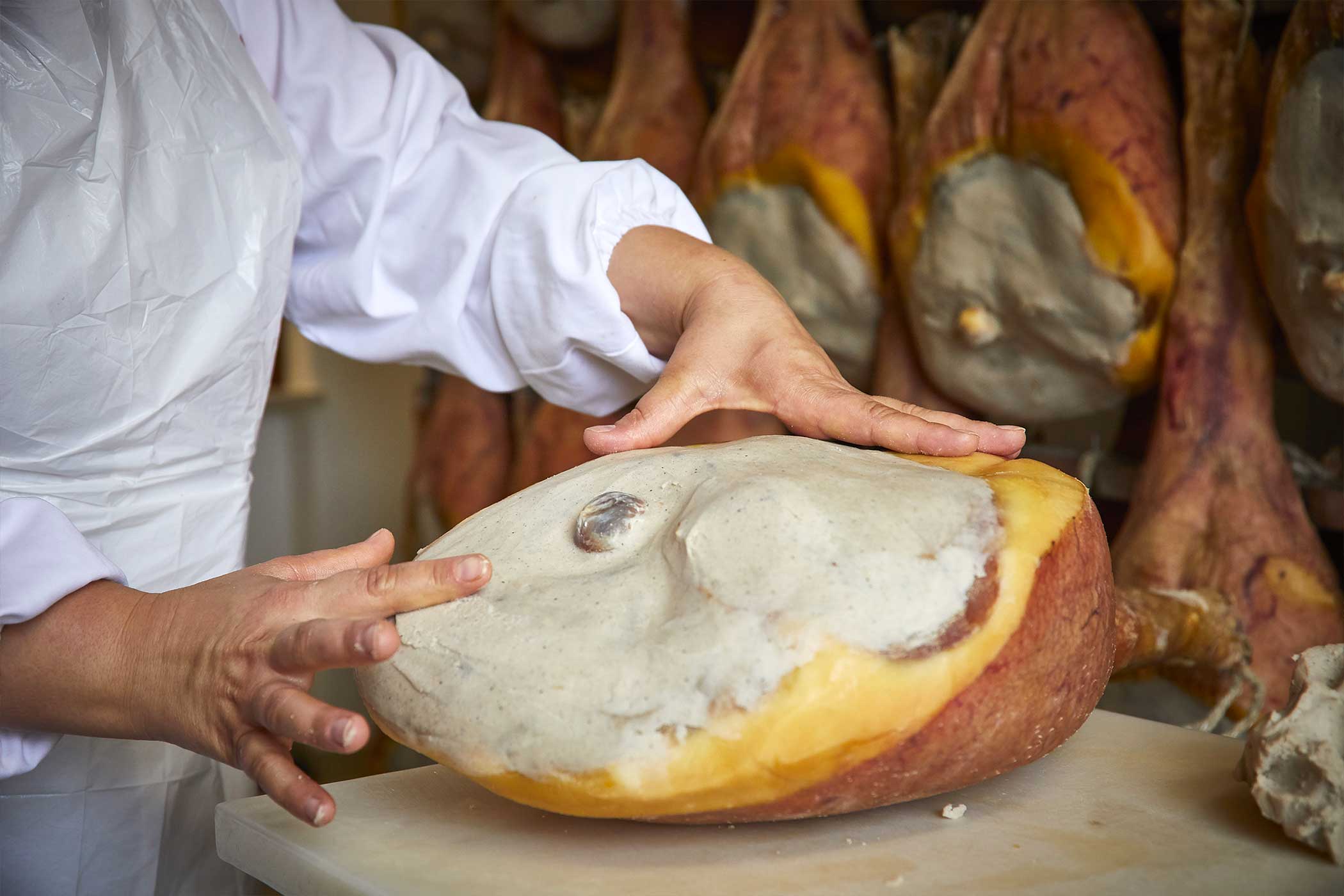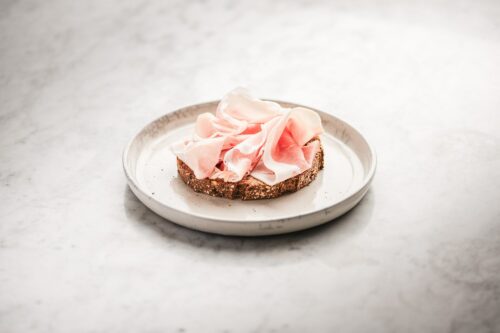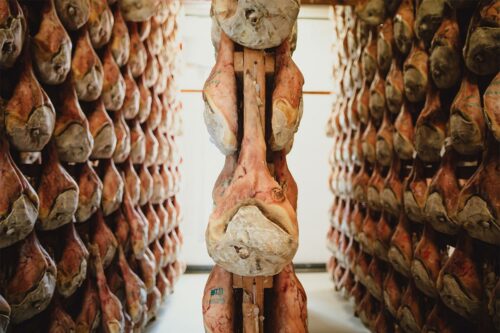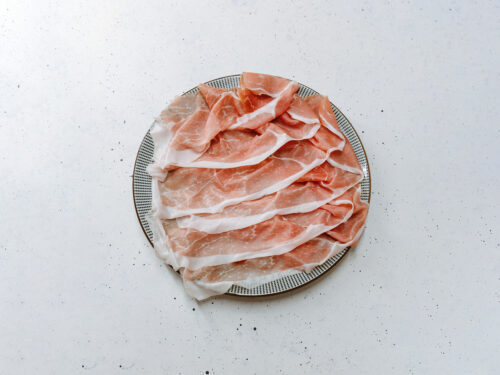Well. We got to the last but one episode of how a Prosciutto di San Daniele Dop becomes one. We explained what happens when a tigh arrives in San Daniele, what the pressing, the washing and the curing are. Today we are dealing with two more essential steps, the smearing and the piercing of the meat!
What is the smearing?
The smearing is a part of the production process. Let’s start from the beginning: how is suet made? You must know that it is a mixture of lard, rice flour, salt and pepper. In order to make this product accessible also in a gluten-free diet, we opted for rice flour (instead of, e.g. wheat flour).This very flexible mixture is applied on the part of the prosciutto that has no rind. To be clear: it is that white layer which – when you buy a prosciutto or when you see it on the cold cuts counter at the supermarket – covers the most bulky part of the thigh! But what’s it for? To make the surface layers softer, so that the meat isn’t too dry and stringy.
Once the smearing is made, the tigh is hung again, in order to carry on the aging process. But it isn’t over yet! You have to know that the prosciutti are checked meticulously during the aging process, with a method called “piercing of the meat”.
What is the piercing of the meat?
What does it imply? Well, first of all it is essential to have a kind of pointed needle. This needle must be derived from a horse thighbone. How come? You have to know that the porousness of this bone fragment allows you to assess the smell and the texture of the meat with high accuracy. The piercing of the meat is very simple: this tool is inserted in the thigh, it is pulled out and the smell and thickness are determined. After the test is carried out, it is very important to daub again the hole made for the check, in order to avoid the formation of external agents.
If all goes well and the prosciutto is considered compliant to be a San Daniele Dop, the branding takes place. At any rate – very important – not before 400 days from the beginning of the production process, according to the new guidelines. The ideal length of the aging can range from 14 to 22 months, the moment when prosciutto is at its best!
Your mouth is watering, isn’t it?





